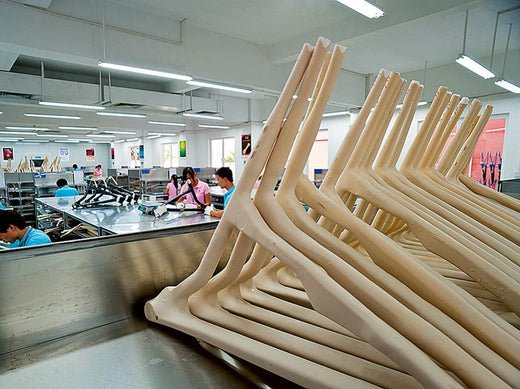
Unlocking the Benefits of EPS Carbon Fiber Bike Molding
Share
In the world of high-performance cycling, the material and construction method of a bike frame can make or break its performance. One of the most revolutionary advancements in frame production is EPS carbon fiber molding—a technique that combines precision engineering with cutting-edge materials to deliver frames that are lighter, stronger, and more aerodynamic than ever before. But what exactly is EPS molding, and why is it changing the game for cyclists worldwide?
This article explores the science behind EPS carbon fiber molding, its advantages over traditional methods, and why this technique is increasingly becoming the gold standard in the cycling industry.
Side note: All ZA Cycle bicycles are made with the EPS molding technique.
What Is EPS Carbon Fiber Molding?
EPS stands for Expanded Polystyrene, which refers to the use of a rigid foam core during the frame manufacturing process. Unlike traditional methods that rely on bladders or hollow molds, EPS molding involves inserting an expanded polystyrene core into the carbon fiber layup. This core maintains a precise shape and prevents wrinkling or inconsistencies during the curing process. Once the resin cures, the EPS core is removed, leaving behind a seamless, perfectly shaped frame.
This method ensures that every inch of the frame is formed with utmost precision, maximizing strength and minimizing unnecessary material.

The Key Benefits of EPS Carbon Fiber Molding
1. Unmatched Precision
One of the most significant advantages of EPS molding is the high level of precision it offers. The foam core provides a stable structure during curing, ensuring consistent wall thickness and eliminating wrinkles or voids in the carbon layers. This results in a frame that is not only more structurally sound but also aesthetically flawless.
2. Improved Strength-to-Weight Ratio
EPS molding allows manufacturers to use just the right amount of carbon fiber and resin, reducing excess material while maintaining strength. The result is a frame that is incredibly lightweight yet strong enough to withstand the rigors of competitive cycling. For riders, this means faster acceleration, easier climbs, and better handling.
3. Enhanced Durability
Frames produced with EPS molding exhibit greater resistance to stress and fatigue. The absence of air pockets or inconsistencies means that the frame is less likely to crack or weaken over time. Cyclists can enjoy a bike that performs at its peak for years, even under intense usage.
4. Aerodynamic Efficiency
The seamless construction achieved through EPS molding enables manufacturers to design frames with complex, aerodynamic shapes. From integrated cable routing to sleek tube profiles, EPS-molded frames reduce drag and optimize speed, making them ideal for racers and time trial enthusiasts.
5. Eco-Friendly Manufacturing
EPS cores are recyclable, and their use reduces material waste during production. By minimizing excess resin and carbon fiber, manufacturers adopting EPS molding contribute to a more sustainable cycling industry.
EPS Molding vs. Traditional Methods
| Feature | Traditional Bladder Molding | EPS Carbon Fiber Molding |
|---|---|---|
| Precision | Moderate | High |
| Wall Thickness | Inconsistent | Consistent |
| Strength-to-Weight | Adequate | Superior |
| Aesthetic Finish | Variable | Seamless |
| Aerodynamic Design | Limited | Highly Optimized |
| Durability | Good | Excellent |

Real-World Applications
EPS carbon fiber molding isn’t just a buzzword—it’s a proven technique used in some of the most advanced bicycles on the market. From high-performance road bikes to aerodynamic time trial machines, this method ensures that cyclists get the best possible performance for their investment.
For example:
- Climbers benefit from lightweight EPS-molded frames that excel on steep gradients.
- Sprinters appreciate the stiffness and power transfer of an EPS frame during high-speed bursts.
- Triathletes and Time Trialists enjoy the aerodynamic advantages that EPS molding enables.
Why Cyclists Should Care
Investing in a bike with an EPS-molded frame isn’t just about having a high-tech product—it’s about enhancing your overall riding experience. Whether you’re a weekend warrior or a competitive racer, the precision, durability, and performance of EPS frames can help you ride farther, faster, and more comfortably.
When comparing frames, understanding the manufacturing process can guide your decision. EPS-molded frames often come at a premium, but their long-term benefits—such as reliability, performance, and aesthetic appeal—make them a worthwhile investment for serious cyclists.
Final Thoughts
EPS carbon fiber molding is redefining what’s possible in the cycling industry. By combining cutting-edge technology with meticulous craftsmanship, this method delivers bikes that meet the demands of modern cyclists—whether on challenging climbs, high-speed descents, or long endurance rides.
If you’re considering upgrading your bike or investing in a new frameset, take a closer look at how it’s made. With EPS carbon fiber molding, you’re not just getting a frame—you’re getting a piece of engineering excellence designed to elevate your ride to the next level.
